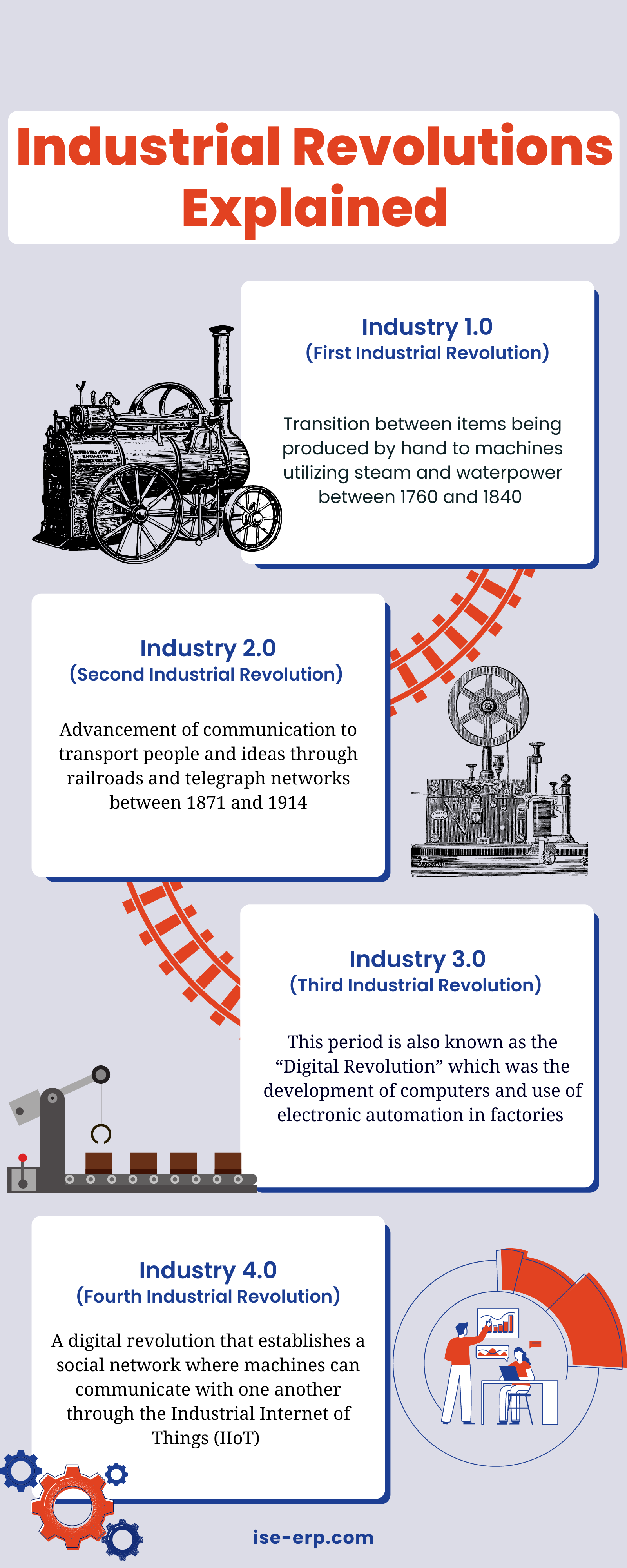What’s the scoop on Industry 4.0?
Industry 4.0 marks the fourth industrial revolution which is the integration of cyber-physical systems, hardware, and software which advances cross-communication capabilities. In simple terms industry 4.0 is the growing trend towards data exchange and automation within the manufacturing industry. The concept is to establish a social network where machines can communicate with one another through the Industrial Internet of Things (IIoT) and people, called the Internet of People (IoP). This ultramodern era will advance fields in artificial intelligence, robotics, 3D printing, fifth-generation wireless technologies, and much more.
How does this compare to Industry 3.0?
Each industrial revolution brought new disruptive technology that set the stage for the next phase. Industry 3.0 introduced computers into the manufacturing process and more robots were used to perform tasks previously done by humans. Whereas industry 4.0 elevates the computer’s capability and the possibility for it to work without direct human instruction.
How will the machines communicate?
These connections are made possible by the IIoT and cyber-physical production systems – systems (CPPS) that utilize computer-based algorithms to control and monitor objects such as machinery and robots. There are three layers of IIoT which include the hardware, firmware, and connectivity. The hardware consists of physical objects that have sensors installed in factories. The firmware holds the software that exchanges real-time data with other devices. The connectivity is the common network that allows the devices to talk with each other. What this means for the manufacturer is, machines can be programmed to oversee the entire production process, analyze them, and make independent decisions.

Real-World Example
An example of this on the manufacturing floor would be if a company used shelf-fitted sensors and weighing devices. The first system would be able to sense when items are added and removed from your inventory. The system would then be able to communicate that information to your main system and send this information to warehouse managers. These capabilities make it extremely easy for warehouse managers to get real-time data about the available inventory.
What does this mean for the future of manufacturing?
As industry 4.0 emerges the possibilities are simply endless. This technology opens the door for manufacturing companies to be more productive and sustainable. The new wave of capabilities will strengthen a mutualistic relationship between people and machines.

